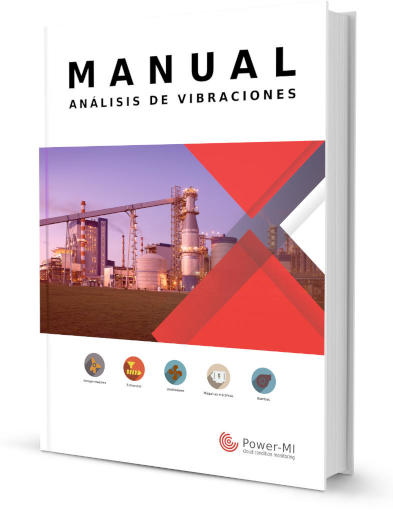Before taking proper vibration readings on a gearbox, the following aspects must be taken into account.
Measuring sensor
When taking spectral readings on a gearbox, make sure that the gearmesh frequency is included and, at least, a second harmonic is included as well. Depending on the rotating speed of the shafts and the number of teeth, this can be a very high frequency and it must be ensured that the sensor selected features a suitable frequency range.
The sensor used is usually an accelerometer, since it has a frequency range much higher than that of a velometer. Once the appropriate sensor has been determined, the mounting method must be selected to ensure that the sensor response using that mounting method covers the frequencies of interest. Measurements taken using magnetic bases are recommended as a minimum requirement.
Measuring units
The accelerometer selected for taking the readings can be used to take acceleration or velocity vibration readings, depending on whether or not an integration of the sensor signal is performed. If the frequencies of interest are within a range lower than 60,000 CPM, it is recommended to work on velocity for a better analysis of the spectrum. If the frequencies of interest are located above 60,000 CPM, it is not necessary to perform an integration of the signal to velocity but just work directly in acceleration. However, the technology has now advanced substantially, so predictive maintenance vibration analysis software features digital integration of the frequency spectra already stored, so frequency spectrum acquisition units are usually not a relevant concern.
Spectral resolution
The spectral resolution allows to differentiate frequencies close to each other. In the specific case of gearbox diagnosis resolution is very important, since it will allow to differentiate the gearmesh frequency from the side bands associated with the rotating frequencies of the gear shafts. If the resolution is insufficient instead of clearly differentiating the gearmesh frequency from the sidebands a single peak with a fairly wide base will be observed. In this situation, it will not be possible to distinguish whether the variation in the amplitude of the wide peak is due to a variation in the amplitude of the gearmesh frequency or in the amplitude of the side bands.
Resolution is calculated according to the following formula:
`sf "LOR" = sf "F"_sf "MAX" / sf "N"_sf "L" xx sf "W"_sf "F"`
where FMAX is the maximum frequency defined in the spectrum, NL is the number of spectral lines and WF is the window factor. The window factor is a constant with a value of 1.5 for the Hanning window, 3.8 for the flat top and 1 for the rectangular.
The maximum frequency selected for the frequency spectrum in a gearbox must be greater than the second harmonic of the gearmesh frequency. If this maximum frequency is less than 70x RPM of the shaft, in the case of a gear mounted on bearings, the latter will be adopted as maximum frequency since it guarantees the visualization in the spectrum of the first harmonics of the rolling element bearing fault frequencies.
Analysis parameters
Variations in the mechanical behavior of a gearbox are in principle associated with variations of the amplitudes of the gearmesh frequency and its harmonics. These frequencies, being high frequencies, usually have little influence on the overall level of vibration in velocity. To detect these variations, the vibration amplitude level for a set of predefined spectrum frequency bands is calculated. In this way, any variation in the spectral activity associated with the condition of the gearbox can be detected. The frequency bands or analysis parameters detailed in the following table are recommended, where each one is associated with some type of particular defect that the gearbox can develop. The last of these parameters measures the activity at high frequency and therefore will have acceleration units.
| Spectral parameter | Bandwidth |
| Imbalance | 0.3x to 1.5x RPM |
| Misalignment | 1.5x to 2.5x RPM |
| Looseness | 2.5x to 10.5x RPM |
| Phantom peaks and sidebands of the first gearmesh frequency harmonic. | 10x RPM to 1x GMF – 5x RPM |
| First gearmesh frequency harmonic. | 1x GMF – 5x RPM to 1x GMF + 5x RPM |
| First and second gearmesh harmonic sidebands, bearing frequencies. | 1x GMF – 5x RPM to 2x GMF + 5x RPM |
| Second gearmesh frequency harmonic. | 2x GMF – 5x RPM to 2x GMF + 5x RPM |
| Overall condition of the gearbox and rolling element bearings. Lubrication of the gearbox and rolling element bearings. | 1 kHz to 20 kHz |

 cloud_download
cloud_download